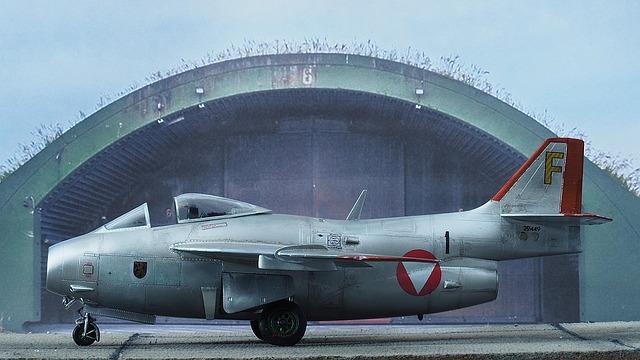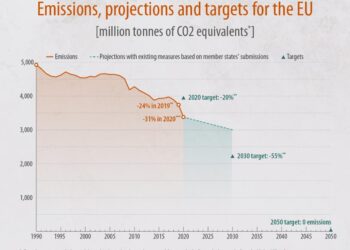Saab has unveiled a tantalizing glimpse into its vision for Sweden’s next-generation combat aircraft as part of the Innovative Fighter Concept (IFC) 2025 initiative. The Swedish defense firm’s latest announcements reveal early design concepts that could shape the future of the nation’s air combat capabilities. With these advancements, Saab signals its commitment to maintaining Sweden’s strategic edge in aerial warfare, amid evolving threats and rapidly advancing technologies. This article delves into the details of Saab’s recent disclosures, offering insights into what the future might hold for Swedish fighter aviation.
Saab Unveils Next Generation Fighter Designs Targeting Swedish Defense Modernization
At the recent International Fighter Conference (IFC) 2025, Saab presented a series of cutting-edge concepts aimed at redefining Sweden’s aerial combat capabilities. These designs emphasize stealth, agility, and advanced sensor fusion, illustrating the company’s commitment to supporting the Swedish Defense’s modernization roadmap. Among the innovations, Saab showcased proposals that integrate adaptive wing structures and next-gen propulsion systems, targeting enhanced performance in diverse mission profiles, from air superiority to electronic warfare.
Key features highlighted by Saab include:
- Multi-spectral stealth coatings to reduce detectability across radar and infrared bands
- Modular avionics architecture enabling rapid upgrades and interoperability with allied forces
- Enhanced AI-driven combat assistance for real-time tactical decision-making
| Feature | Benefit | Status |
|---|---|---|
| Adaptive Wing Structures | Improved maneuverability & fuel efficiency | Concept Phase |
| Advanced Sensor Fusion | Enhanced situational awareness | Prototype Testing |
| AI Combat Assistance | Faster threat response time | Development |
Advanced Technologies and Capabilities Shaping the Future of Swedish Air Power
Sweden’s aerospace industry is rapidly advancing its capabilities, with Saab leading the charge in integrating cutting-edge technologies that promise to redefine air dominance. Central to these developments is the emphasis on autonomous systems that enhance pilot decision-making through real-time data analytics and AI-driven threat detection. Coupled with next-generation stealth materials and adaptive avionics, these innovations are designed to create a multi-domain combat platform optimized for both air-to-air and air-to-ground operations, ensuring operational superiority in contested environments.
Additionally, modular design principles are enabling flexible mission configurations, allowing for quick adaptation to varying operational requirements. Key advancements include:
- Advanced sensor fusion providing 360-degree situational awareness
- Hypersonic weapon integration for rapid strike capabilities
- Enhanced electronic warfare suites to counter emerging threats
- Collaborative drone networks extending surveillance and engagement range
| Capability | Description | Operational Advantage |
|---|---|---|
| AI-Enabled Targeting | Automated threat analysis for faster response | Reduced pilot workload |
| Stealth Coatings | Adaptive materials that minimize radar signature | Improved survivability |
| Modular Payload Bays | Quick swaps between sensors, weapons, and fuel tanks | Mission flexibility |
Strategic Recommendations for Integrating IFC 2025 Concepts into National Defense Planning
To effectively capitalize on the innovative design principles embedded within IFC 2025, defense planners must emphasize a holistic approach that balances cutting-edge technology with adaptable operational frameworks. Prioritizing modularity in aircraft systems will enable seamless upgrades and integration of emerging capabilities, ensuring fleet longevity and mission relevance in rapidly evolving threat environments. Moreover, fostering closer collaboration between industry leaders, such as Saab, and defense R&D departments can accelerate knowledge transfer and reduce the time-to-deployment for advanced fighter concepts.
Key areas of focus include:
- Joint force interoperability: Enhance multi-domain communication protocols to leverage the full spectrum of IFC 2025 capabilities.
- Data-driven decision-making: Integrate AI-powered analytics to maximize situational awareness and adaptive mission planning.
- Resilience and survivability: Incorporate stealth and electronic warfare advancements to maintain air superiority in contested environments.
- Flexible acquisition strategies: Adopt phased procurement plans that allow iterative technology insertion based on operational feedback.
| Strategic Focus | Expected Outcome | Implementation Timeline |
|---|---|---|
| Modular System Integration | Enhanced upgrade flexibility | 2025-2028 |
| AI-Driven Mission Planning | Improved operational responsiveness | 2026-2029 |
| Resilience and Survivability Enhancements | Sustained air superiority in contested zones | 2025-2030 |
| Phased Acquisition Strategies | Adaptive technology deployment | Ongoing, starting 2025 |
If you want, I can help you format or expand on the content. Let me know!
To Conclude
As the International Fighter Conference (IFC) 2025 approaches, Saab’s early insights into its future fighter concepts signal Sweden’s commitment to advancing its national defense capabilities. While details remain tightly held, the company’s teasers underscore a clear focus on innovation and adaptability in response to evolving security challenges. Industry observers will be watching closely as Saab continues to shape the next generation of airborne platforms, reflecting broader trends in military aviation. Further updates are expected in the coming months as the IFC draws near.
















